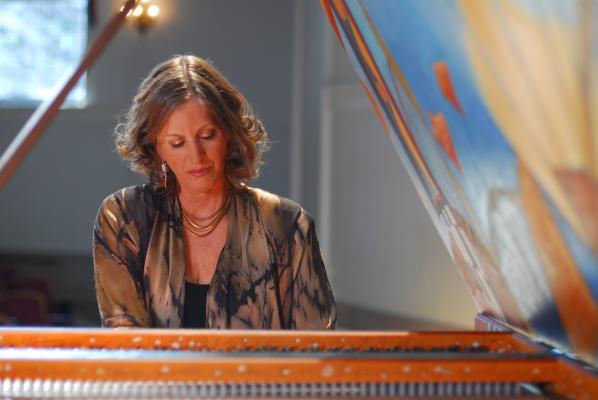
Time flies.
Elaine Funaro’s compact disc Time Flies (Centaur CRC 3783) is this valued artist’s valedictory musical program to mark her stepping down as CEO of Aliénor, the non-profit organization that sponsors worldwide competitions for contemporary harpsichord compositions and for the promotion and publication of the winning works thereof.
Aliénor (named for Eleanor of Aquitaine) was the brainchild of Dr. George Lucktenberg (1930–2014), founder of the Southeastern Historic Keyboard Society, which, united with the Midwestern society of similar name and purpose, is now known as the Historic Keyboard Society of North America (HKSNA), which now has jurisdiction over Aliénor and its events. It was Funaro who registered Aliénor as an independent, non-profit 501(c)(3) organization when she took charge in 1999 following two decades of leadership by its founder Lucktenberg. It seems that two decades comprise the term of service for individuals who supervise Aliénor’s endeavors.
Elaine Funaro has been an active CEO who has travelled extensively to make Aliénor known on at least five continents. She is a first-rate harpsichordist with multiple recordings of contemporary harpsichord pieces and has been active in providing print volumes for many of the prize-wining compositions.
Recently I received a request from a correspondent of The Diapason who asked me to make copies of several of the contemporary scores that I have recommended. I responded quickly that I was not authorized to make copies and suggested that the inquirer contact the composers, who, of course, own the copyrights for their creations. In the spirit of that necessity (the support of copyright), I draw attention to four volumes published by Aliénor:
• The Aliénor Book: A Collection of Contemporary Pieces for Harpsichord, by Thomas Benjamin, Jorg Demus, Albert Glinsky, Robert Muczynski, and Chan Ka Nin, Hinshaw Music, Inc., 1988, $19.99, available from sheetmusicplus.com.
• Aliénor Harpsichord Competition: The 2000 Composition Winners, Dmitri Cervo, Rudy Davenport, Kent Holliday, and Timothy Tikker, Wayne Leupold Editions, 2007, WL600233, available from wayneleupold.com, $26.50.
• Aliénor Preludes for Harpsichord, Rudy Davenport, Thomas Donahue, Pablo Escade, Edward Gerber, Andrew Guster, Kent Holliday, Janine Johnson, Rachel Laurin, Ronald McKean, and Philip Underwood, PRB Productions, available from skylinestudio.com, $35.
• Aliénor Anthology 2015 (Ten Pieces), by Yuri Ban, Daniel Basford, Ivan Bozicevic, Andrew Collet, Sviatoslav Krutykov, Satono Norizuki, Gianamdrea Pauletta, Adam Rothenberg, Dina Smorgonskaya, and Laura Snowden. All ten of these are included on the current CD. Note the increased number of women composers! Also of interest is that Elaine included all of this volume on her current disk.
Yes, indeed, time does fly—the older we get, the faster it seems . . . . I recommend for all who are interested in new music for our “old” instrument to access Elaine Funaro’s valedictory offering. Her playing is stellar as is her Richard Kingston harpsichord. I am reminded of some Biblical words when I think of Elaine’s years of service to our music-making: “Well done, thou good and faithful servant.”
Editor’s note: learn more about Elaine Funaro at her website: http://elainefunaromusic.com

